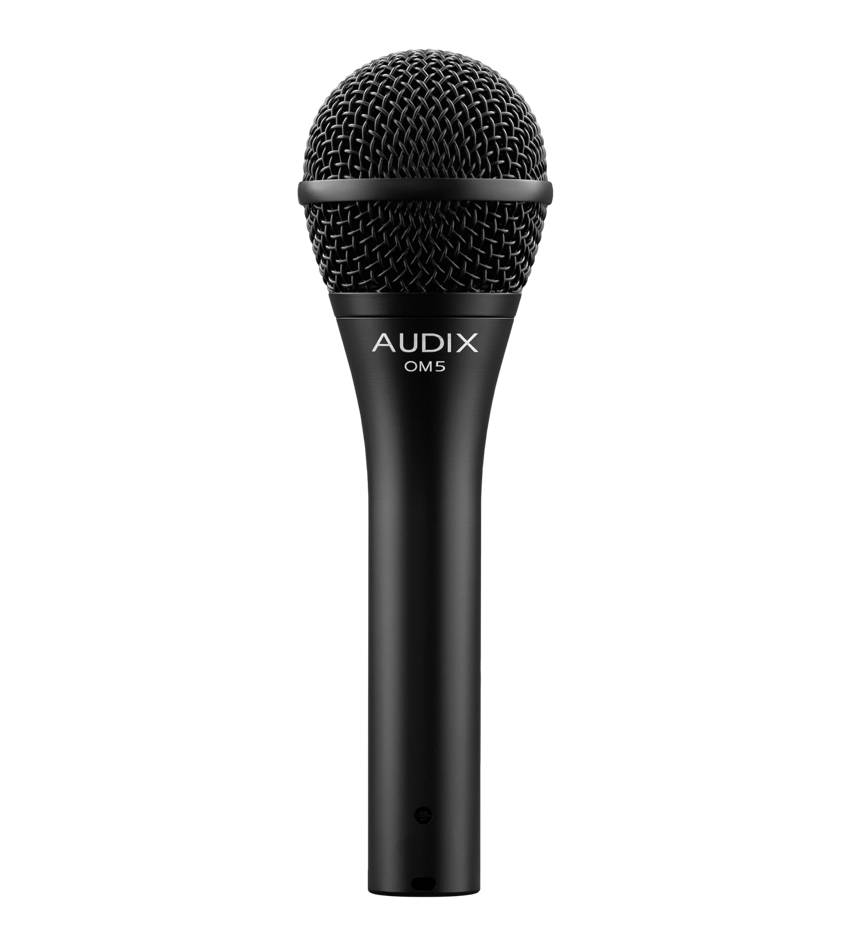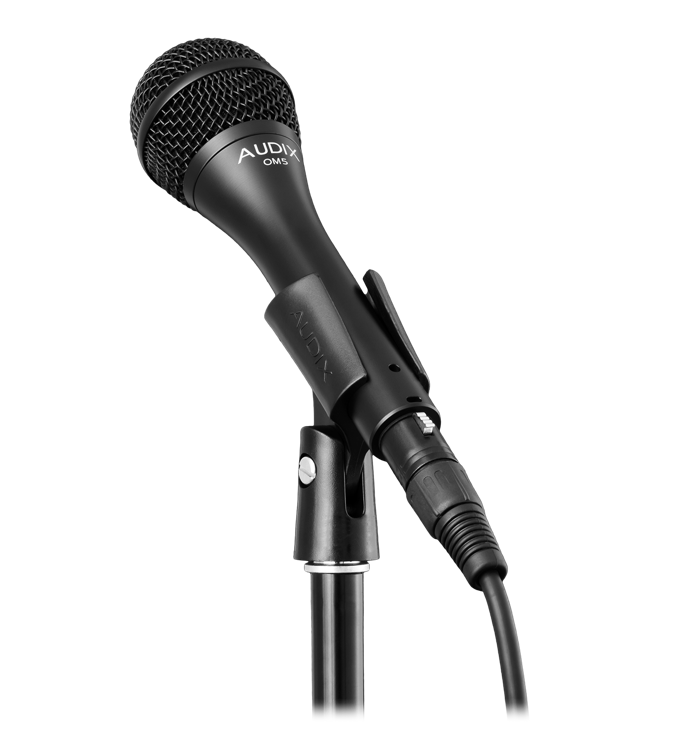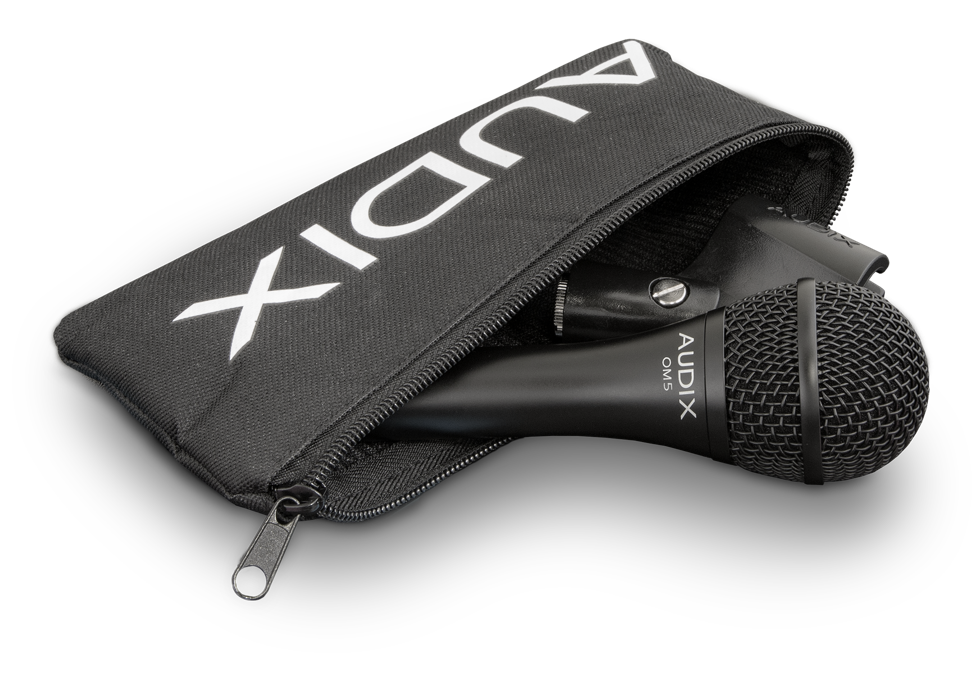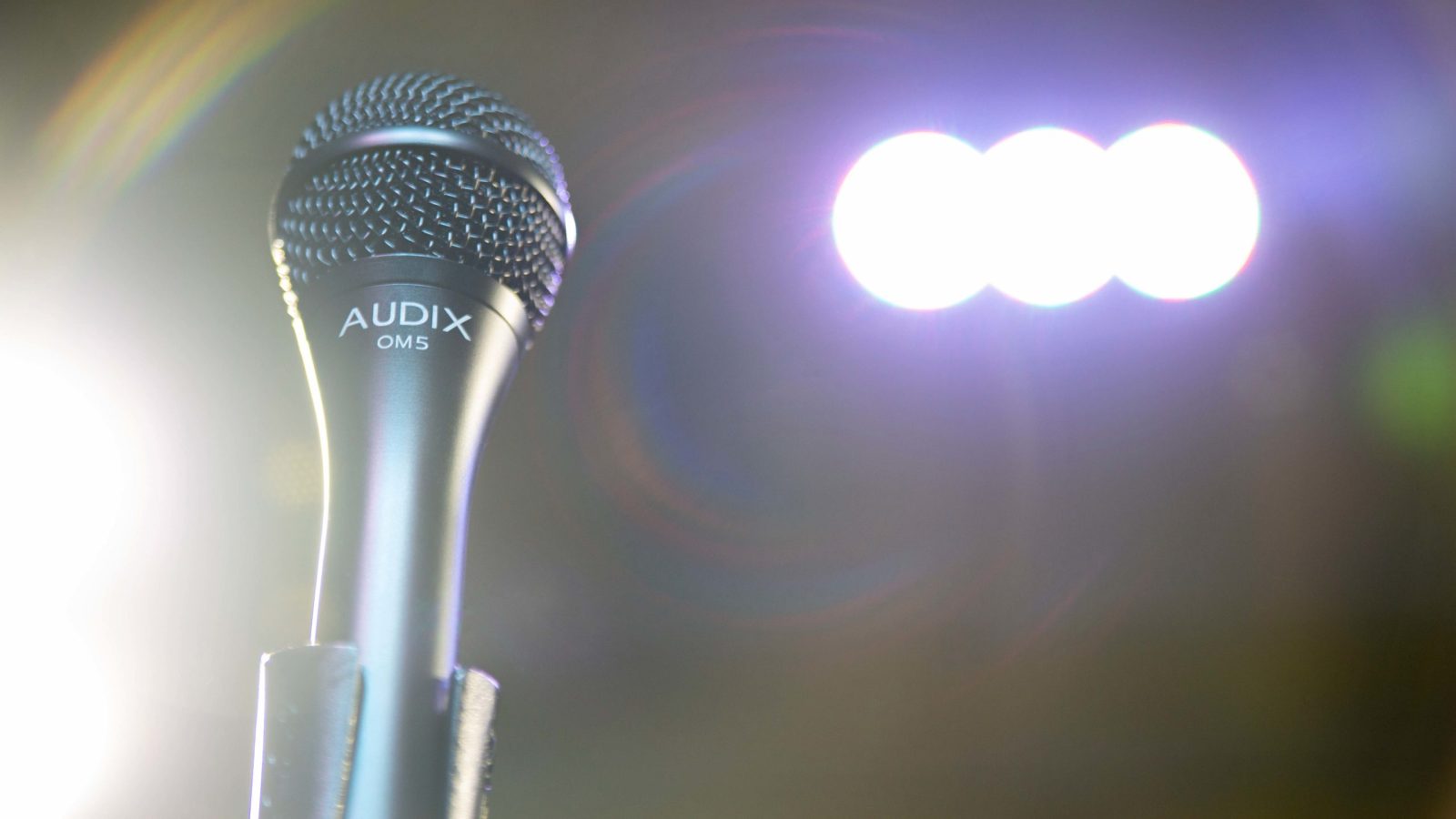Audix OM 5
Dynamische zang en spraakmicrofoon gebruikt voor podium-, studio- en uitzendingstoepassingen
Vragen? Betere prijs gezien?
Bel 0512 - 340457 of neem contact op!
Product omschrijving
OM5
Professional dynamic vocal microphone
The OM5 vocal dynamic microphone is made with an extremely tight and uniformly controlled hypercardioid polar pattern which isolates the vocals from the rest of the instruments on stage or in a studio.
Used on stage, in studios and for broadcast applications, the OM5 hypercardioid microphone has a reputation for clarity, resistance to feedback, and the ability to handle SPLs in excess of 144 dB without distortion.
The OM5 dynamic vocal microphone is naturally attenuated at 120 Hz to reduce boominess and handling noise. The mid-range is tailored to provide an extra presence in the vocals allowing the vocalist to be easily heard through the main speakers as well as the monitors.
Designed, assembled, and tested by Audix in the USA.

FEATURES
- Concert level, professional vocal mic for live sound, broadcast, and studio
- Very tight pattern control, exceptional clarity for premium PA systems
- Clear, accurate sound with slight mid-range boost
- Allows vocals to cut through the stage mix
- Extreme off-axis rejection provides excellent isolation on stage
- VLM Capsule
- Designed, assembled & tested in the USA
- 5 year warranty
APPLICATIONS
- Lead or backing vocals
- Live recording
- Broadcast
- Home studio - vocal and instrument
- Sax, brass, guitar, dobro, flute, percussion, drums
SUPPLIED ACCESSORIES
- MC1 - Heavy-duty nylon molded clip with brass insert
- P1 - Carrying pouch
OPTIONAL ACCESSORIES
- WS357 - Optional high quality external foam windscreen for reducing wind, sibilance, and pop noise.
- CBL20 - 20’ premium XLR-XLR balanced mic cable. Quad conductor, twisted pair with braided shield for maximum conductivity. 6mm PVC jacketed.
- CBLDR25 - 25’ premium right angle XLR-XLR balanced mic cable. Quad conductor, twisted pair with braided shield for maximum conductivity. 6mm PVC jacketed.
- T50K - Professional impedance matching transformer that allows a low impedance mic to be connected to a high impedance input.
- TRIPOD - Metal tripod desktop stand for use with any 5/8” threaded mic clip.
SPECIFICATIONS
Transducer Type: Dynamic
Frequency Response: 48 Hz - 19 kHz
Polar Pattern: Hypercardioid
Output Impedance: 200 ohms
Sensitivity: 2 mV / Pa @ 1k
Capsule Technology: VLM Type C
Off-Axis Rejection: >30 dB
Maximum SPL: ≥144 dB
Power Requirements: None
Connector: 3-pin XLRm
Polarity: Positive pressure on diaphragm produces positive voltage on pin 2 relative to pin 3 of output XLR connector
Materials / Finish: Zinc Alloy / Black Finish
Weight: 330 g / 11.6 oz
Length: 176 mm / 6.9 in

OPERATION AND MAINTENANCE
The OM5 is a low impedance microphone and should be plugged into the ‘mic level’ input of your console, mixer or recording device. Please note that your microphone does not require phantom power and will not be affected in any way by phantom power should it be running simultaneously while the microphone is in operation. Avoid plugging or unplugging the microphone from the PA system unless the channel is muted or the volume of the system turned down. Failure to do so may result in a loud ‘popping’ noise which could seriously damage the speakers in the PA system.
The OM5 is manufactured to exacting specs with roadworthy construction. However, the capsule is highly sensitive and should be handled with care. Avoid extreme temperatures and be sure to store your microphone in the pouch provided when not in use. Moisture of any kind can adversely effect the sound and performance of your microphone.
USER TIPS
The OM5 has a very tight pick-up pattern in order to help eliminate sound from other instruments on stage from ‘bleeding’ into the microphone. For best results, it is important to sing directly into the mic at close proximity (within 2 inches).
When using floor monitors, position the microphone so that it is parallel to the floor. When using multiple microphones on a live performance stage, allow a distance of 2-3 feet between mics to avoid phase issues.
Further miking techniques may be found at www.audixusa.com.

 Product is toegevoegd aan uw winkelwagen
Product is toegevoegd aan uw winkelwagen






